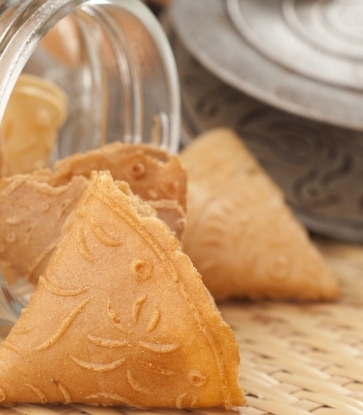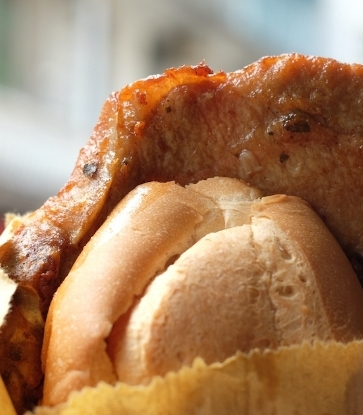But properly made aspic has a rich history and culinary tradition that spans centuries and cultures across the globe. It is a dish that is notoriously laborious to make, requiring hours of slaving by the stove to cook down meat and bones into a thick consommé that solidifies when cooled.
A good, classic aspic should, in the words of famous French chef and author Auguste Escoffier, be “at once succulent, limpid and just sufficiently viscous to allow of it being turned out of a mould without breaking”.

Making proper aspic is laborious and time-consuming, but not complex. Essentially, gelatine is extracted by slowly simmering animal parts like collagen-rich skin or bones with plenty of cartilage or tendon. The velvety, thick stock that is derived after several hours is rich in collagen and the microscopic proteins within it become entwined, forming a mesh that solidifies when cooled.

To achieve a clear jelly, it is important to simmer the stock very gently or wrap the bones in cheesecloth before boiling them down. The resulting stock can be further clarified by adding lightly whisked egg whites and bringing the stock to a boil.
The egg white will start to form a crust on the surface that traps all the impurities that make the liquid cloudy. The crust can then carefully be strained off after about 10 mins and the clarified stock poured into a mould with layers of ingredients. Once cooled, the stock solidifies into a gelatinous aspic.
The earliest detailed recipe for aspic is found in Le Viandier, a collection of haute cuisine recipes produced in the 1300s. Cooks in the Middle Ages had discovered that thickened meat broth cooled into a jelly and the gelatine kept out air and bacteria, preserving the cooked meat inside for longer periods of time.
In the 19th century, legendary French chef Marie-Antoine Carême perfected the art of aspic-making and his elaborate, quivering creations were an integral part of the royal cuisine that he presented in Napoleon’s imperial court. He was the one who coined the term chaud-froid, which is French for “hot-cold”, used to describe his architectural showpieces that were first cooked, then served cold — think truffles and poultry suspended in jelly and aspics of cocks’ combs and stones or red calf’s tongue and sweetbreads.

A Delicacy That Spans Cultures
While the golden age of aspics in America has long come to an end by the early 1960s, aspics remain a part of many food cultures all over the world. In Russia and Eastern Europe, vodka drinking is incomplete without kholodets, a delicacy made with pork feet, tail or ears and eaten with horseradish or mustard. Danish open-faced sandwiches are sometimes topped with cold cuts suspended in sky, an aspic made of meat juices and gelatin. In Nepal, buffalo is the protein of choice for ta kha, a popular winter dish among the Newars of Kathmandu Valley.






















